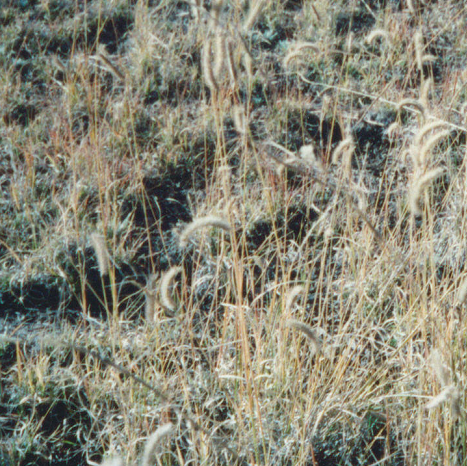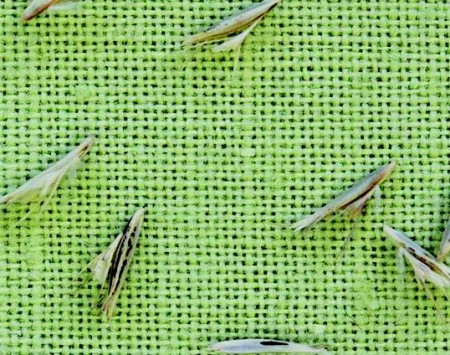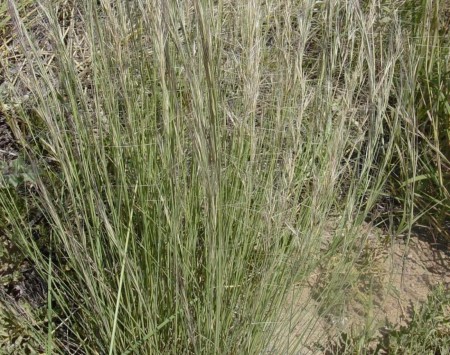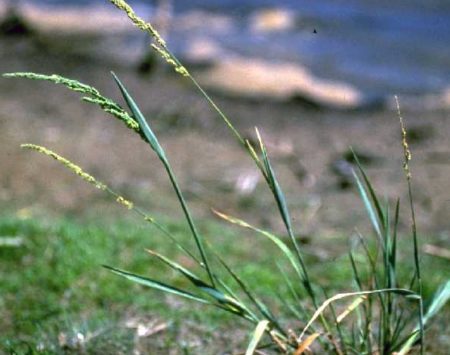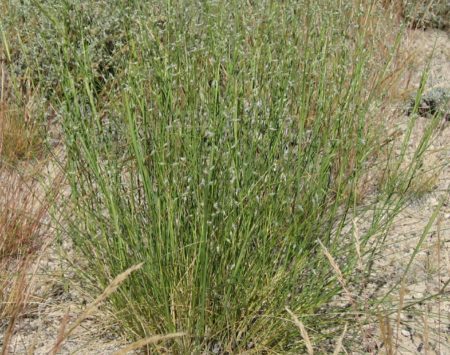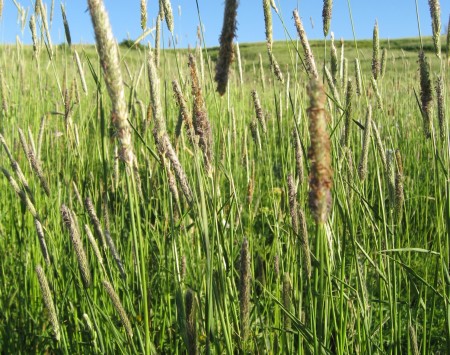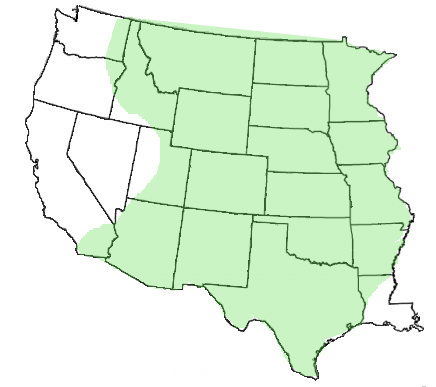 Bouteloua gracilis,
Bouteloua gracilis,
Blue Grama (Native)
Small to mid-sized, 6 – 18 inches, warm-season, long-lived, drought-tolerant, open sod-forming bunchgrass (tillering). In the north, at higher elevations and when closely grazed, a sod-former type. Most important of the gramas and most common species in the Western U. S. (not coastal states). Adapted to all soil textures, but grows less vigorously on sandy and clay soils. Moderate alkali, salinity and low soil fertility tolerance. Very important forage species. Very valuable species for range, watershed and wildlife habitat improvement. Also used for mining and similar reclamation and for low maintenance turf. Minimum precip. is 8 – 10 inches. Plant spring/summer ¼ – ½ inch deep. 724,000 seeds/lb.
Named Releases: ‘Lovington’ (Cultivar) Released in 1963 by the NM AES and PMC from a ecotype near Lovington, NM.
‘Hachita’ (Cultivar) Released in 1980 by the Los Lunas, NM PMC and CO and NM AES. Source material came from south of Hachita, NM. This is the most drought tolerant of the Blue Grama tested varieties.
‘Bad River Ecotype’ (Selected) Released from the ND PMC and AES. Origin is Hacikon Co., SD. Intended use is in the northern Great Plains.
USDA: Plant Profile | Plant Guide | Fact Sheet

